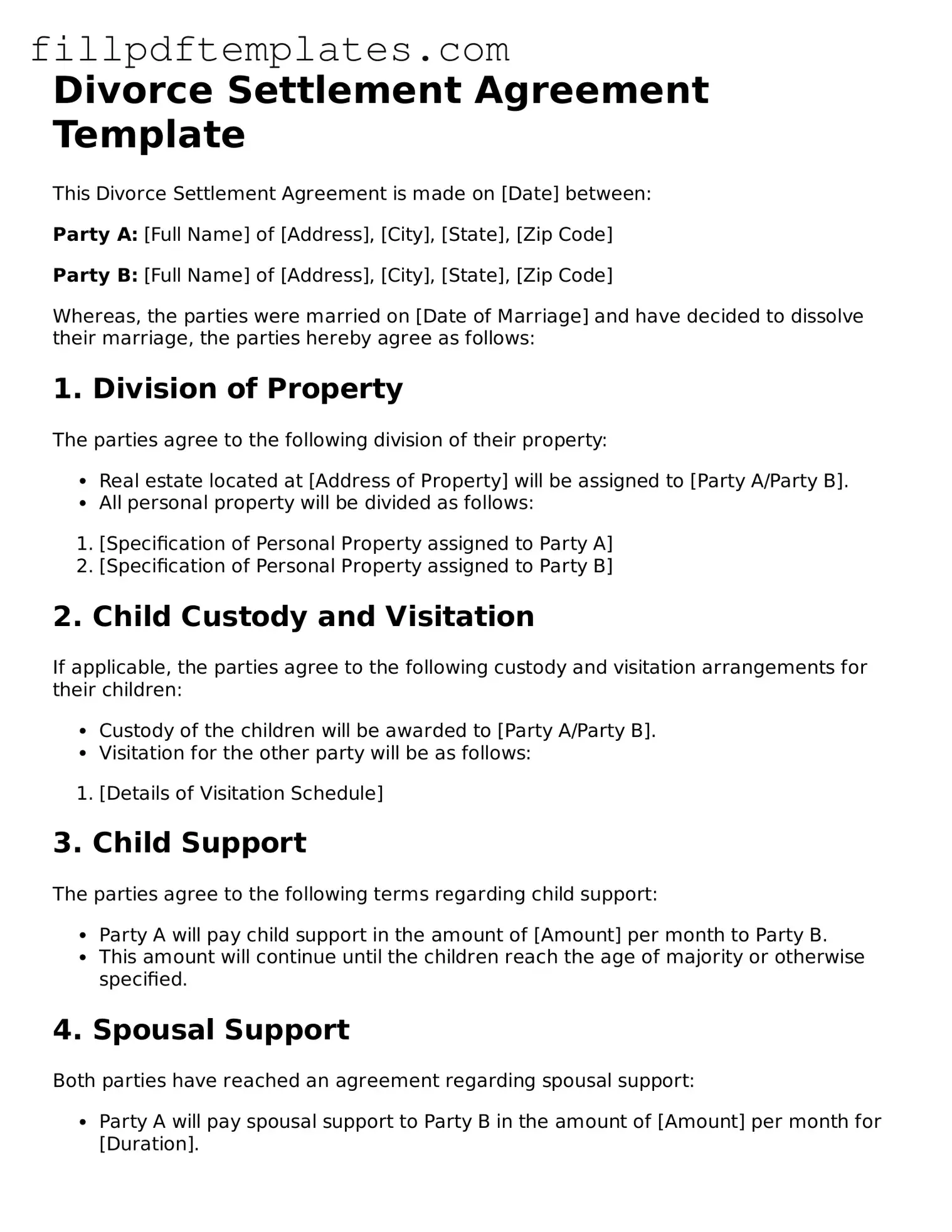Divorce Settlement Agreement Template
This Divorce Settlement Agreement is made on [Date] between:
Party A: [Full Name] of [Address], [City], [State], [Zip Code]
Party B: [Full Name] of [Address], [City], [State], [Zip Code]
Whereas, the parties were married on [Date of Marriage] and have decided to dissolve their marriage, the parties hereby agree as follows:
1. Division of Property
The parties agree to the following division of their property:
- Real estate located at [Address of Property] will be assigned to [Party A/Party B].
- All personal property will be divided as follows:
- [Specification of Personal Property assigned to Party A]
- [Specification of Personal Property assigned to Party B]
2. Child Custody and Visitation
If applicable, the parties agree to the following custody and visitation arrangements for their children:
- Custody of the children will be awarded to [Party A/Party B].
- Visitation for the other party will be as follows:
- [Details of Visitation Schedule]
3. Child Support
The parties agree to the following terms regarding child support:
- Party A will pay child support in the amount of [Amount] per month to Party B.
- This amount will continue until the children reach the age of majority or otherwise specified.
4. Spousal Support
Both parties have reached an agreement regarding spousal support:
- Party A will pay spousal support to Party B in the amount of [Amount] per month for [Duration].
5. Debts
The parties agree to the following responsibility for debts:
- Party A will be responsible for the following debts: [List of Debts].
- Party B will be responsible for the following debts: [List of Debts].
6. Miscellaneous
Any additional agreements made between the parties are noted here:
- [Other Agreements or Terms].
This Divorce Settlement Agreement serves as a legally binding document effective on the date signed by both parties.
IN WITNESS WHEREOF, the parties hereto have executed this agreement on the day and year first above written.
__________________________
Party A Signature Date: [Date]
__________________________
Party B Signature Date: [Date]
